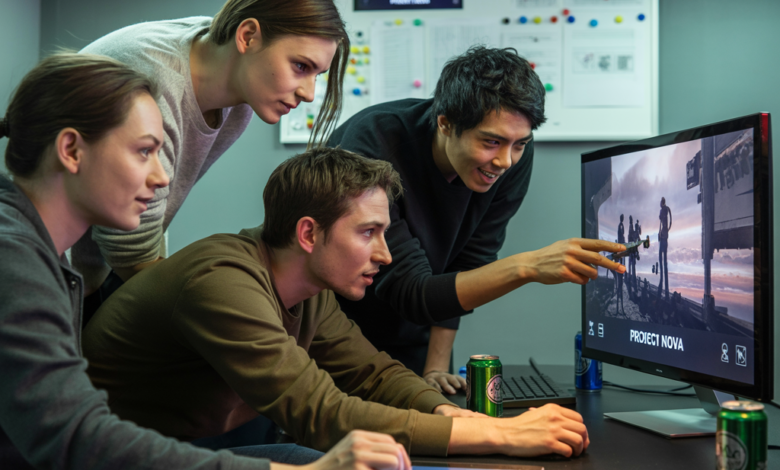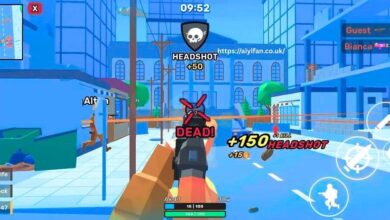Choosing the Right Game Animation Services for Your Genre and Platform

If your game’s movement, flow, or visual impact feels off, even by a few frames, it’s over. Players notice, reviewers point it out, and downloads dip. In a saturated industry where visual fidelity meets player expectations, game animation isn’t just a layer of polish; it’s a core pillar.
From fluid combat mechanics to subtle idle animations, game animation services now define how players feel your game, not just see it. But here’s the catch: not every animation studio or approach works for every title. The right service depends heavily on your genre and platform.
Let’s explore how to navigate this terrain and align your animation strategy with your game’s DNA.
Why Genre-Specific Game Animation Services Matter
Animation isn’t universal. What works in a hack-and-slash fails miserably in a slow-burn detective RPG. Game animation services that understand your genre bring an advantage most generalists don’t: context.
Action Games Need Speed and Feedback
Feedback is king in shooters, fighters, and fast-paced brawlers. Animations must telegraph moves, reflect weight, and sync with controls.
Game animation services tuned into these genres often work frame-by-frame to ensure input responsiveness, hit-stop effects, and kinetic satisfaction.
RPGs Require Depth and Detail
In open-world and story-driven games, animation fuels immersion. It’s not about speed but storytelling, how a character sits, reacts, or walks into a tense scene.
Mocap blending, facial rigging, and behavioral loops define the quality standard for triple-A games in this space. Animation has to support branching narratives and world interactions.
Strategy and Simulation Rely on Clarity
Clarity trumps flair in strategy or simulation titles. Animations must convey mechanics cleanly: who’s attacking, what’s building, what’s changing in-game state.
Here, game animation services use simpler loops, strong silhouettes, and camera-friendly choreography for visibility over flashiness.
Matching Animation Style to Platform Expectations
You wouldn’t animate a mobile puzzle game like a cinematic console adventure. Platforms define both player behavior and performance ceilings.
Mobile Games Focus on Lightweight Loops
Battery, processor, and attention span; these shape mobile game design. Animations must be optimized, concise, and UI-friendly.
Game animation services for mobile often build smaller sprite sheets or bone-rigged animations to keep file sizes low and frame rates smooth on mid-tier devices.
Console and PC Allow Cinematic Flair
Players expect more on PlayStation, Xbox, and high-end PCs: detailed characters, complex rigging, and emotional expressions. This is where triple-A games shine.
Services here push technical boundaries, realistic cloth physics, full-body IK systems, and subtle facial nuances during in-engine cutscenes.
Browser and Indie Platforms Prioritize Simplicity
Web games and small-scale indie projects often run on tighter budgets and engines like Unity or Godot. Animation here must serve style and performance within constraints.
Game animation services working with these platforms often prioritize 2D animations, hand-crafted frame loops, and modular asset use for flexibility.
Choosing the Right Game Animation Services
Genre and platform alignment are only half the story when selecting the right animation partner. What separates a good service from a perfect one is its process.
1. Style Adaptability
Do they only do hyperrealistic rigs? Or can they shift to stylized, retro, or minimal art styles based on your IP?
A flexible game animation service won’t try to fit every project into the same pipeline; they’ll adapt.
2. Engine Familiarity
Your game engine matters. Studios fluent in Unreal, Unity, or custom engines reduce back-and-forth and plugin headaches. Ask to see in-engine animation previews, not just rendered reels.
3. Pipeline Integration
Can they slot into your existing asset pipeline? Services that understand asset naming, optimization, and batch exporting are a win for streamlined deployment.
When to Use Specialized Game Animation Services
Sometimes, outsourcing all animations doesn’t make sense. But in specific areas, bringing in focused talent delivers serious ROI.
Combat Animations
Essential for action RPGs, beat ’em ups, and triple-A games, impact, anticipation, and recovery phases must feel just right.
Facial and Lip Sync
Especially for dialogue-heavy games. Good services will sync to VO timing, eye darting, and emotional cues.
Creature and Fantasy Movements
Animating a dragon, tentacle monster, or alien parasite isn’t just a skill; it’s an art. Choose services with prior examples in creature rigging and physics.
Game Animation Services for Different Art Styles
Choosing animation services isn’t just about movement but about how that movement complements your game’s visual identity. Different art styles demand different animation philosophies.
Realistic 3D Animation
For developers aiming for realism, especially in triple-A games, animation has to be technically refined and physically accurate. The services required for these projects include mocap cleaning, secondary motion simulation, and intricate rigging for hands, facial muscles, and environmental interaction.
Studios offering this typically house motion capture stages or have partnerships with mocap vendors. These services excel in realism, but may not suit stylized or cartoon projects.
Stylized or Cartoon Animation
Games like Cuphead or Hades rely on fluidity, exaggeration, and personality. For these, animation is about rhythm and visual storytelling over strict realism. Timing, squash-and-stretch, and expressive posing define quality.
Game animation services working in this area should demonstrate a deep understanding of traditional animation principles, especially if 2D frame-by-frame techniques are in play.
Pixel Art Animation
Pixel-based games require precision at a micro level. Good animation here balances charm with readability, even at 16×16 sprites. Look for services that specialize in sprite-based pipelines, often animating frame-by-frame using tools like Aseprite or Photoshop.
Questions to Ask Before Signing a Contract
To avoid surprises, ask the following during initial talks:
- Do you work in our engine (Unity, Unreal, etc.) natively?
- Can you deliver LOD (level of detail) variants for different platforms?
- Are you comfortable creating assets within our visual style guide?
- Do you offer rigging services or require pre-rigged models?
- What’s your turnaround time for 60-second character loops or full cutscenes?
Asking these up front can save days or weeks down the line.
How Game Animation Services Impact User Retention
Great visuals might earn downloads. But great animation drives retention. Smooth controls, feedback on inputs, and personality-rich characters keep players engaged.
Why Animation Impacts Player Feel
- Hit reactions make combat more satisfying
- Subtle camera shakes and recoil animations enhance immersion
- Looping idle behaviors breathe life into NPCs
- Environmental cues through animation help guide players naturally
Final Words
Choosing the right game animation services isn’t just about outsourcing a task; it’s about aligning with storytellers who understand your audience, engine, and artistic soul.
From high-end triple-A games to mobile titles built on minimal assets, animation is often the bridge between development and how your game feels. When done right, it’s invisible. Seamless. Powerful.
If you aim for a game that connects, captivates, and converts, your animation partner matters as much as your code, mechanics, or art.Invest wisely. Animate smartly. And most importantly, don’t settle for a movement that just moves. Demand movement that matters.





